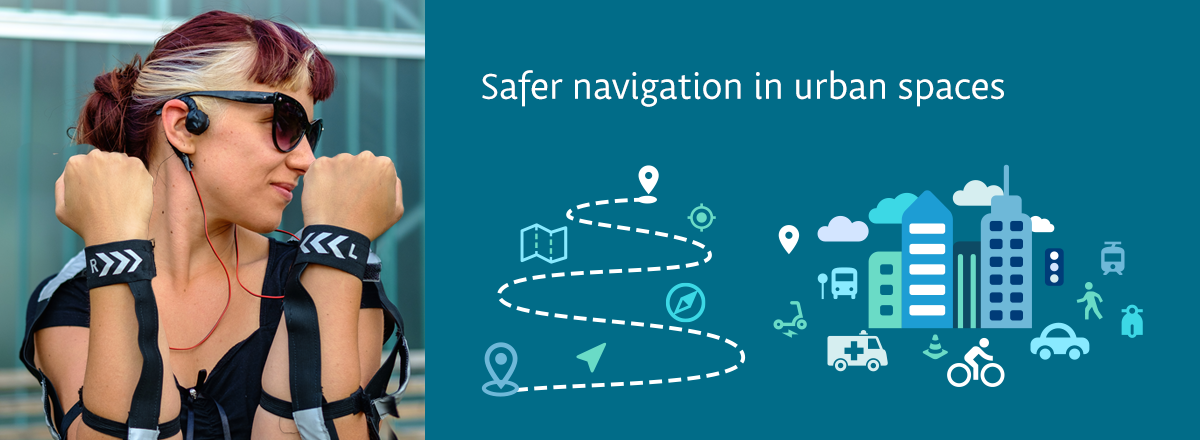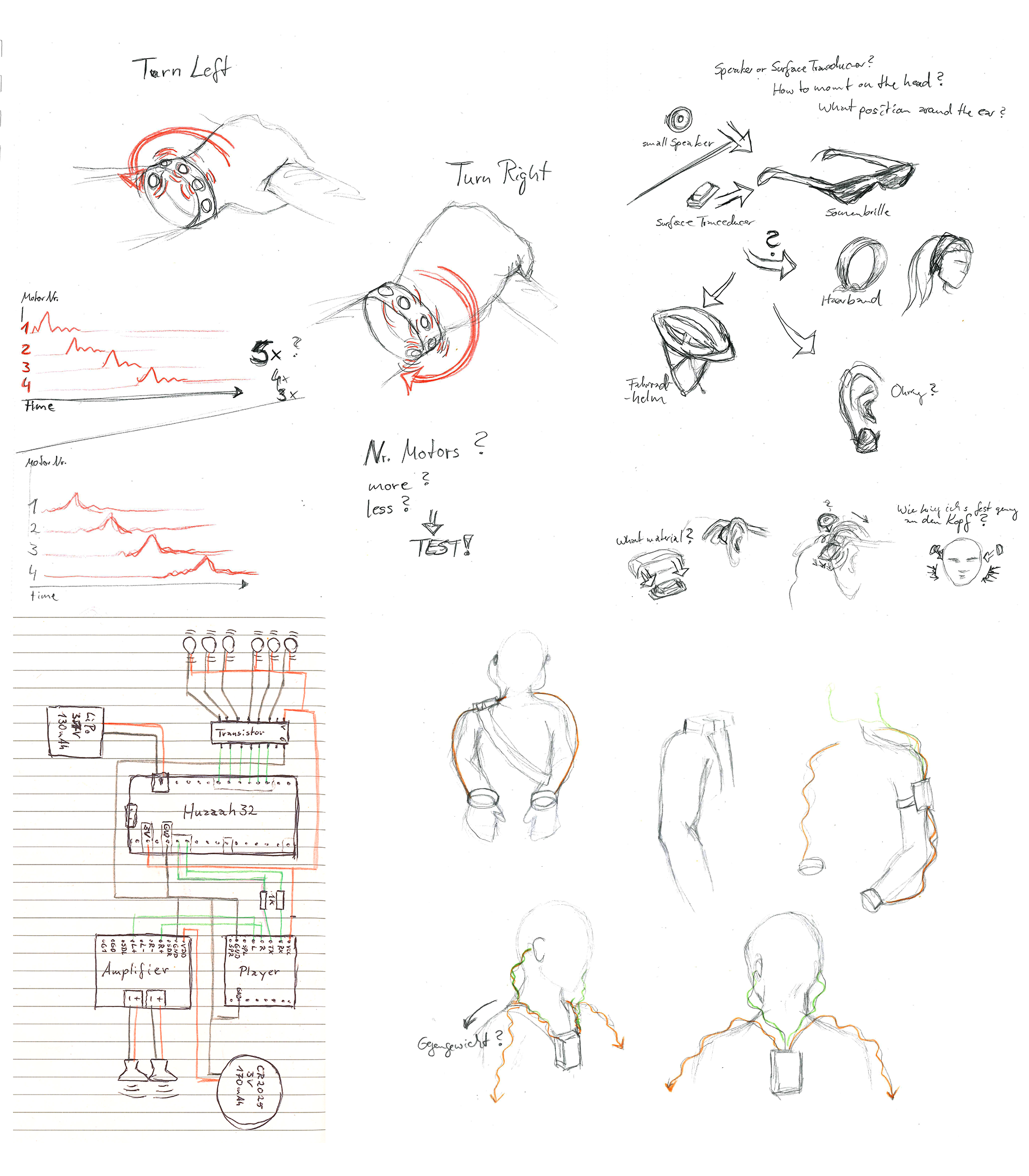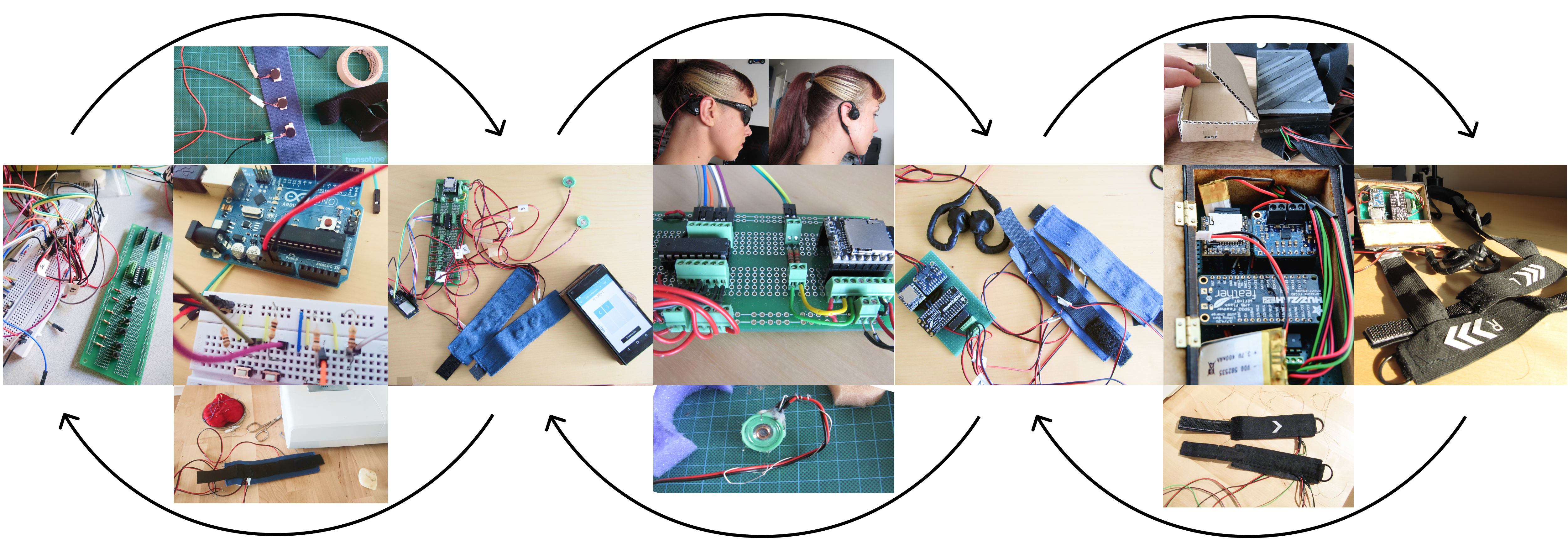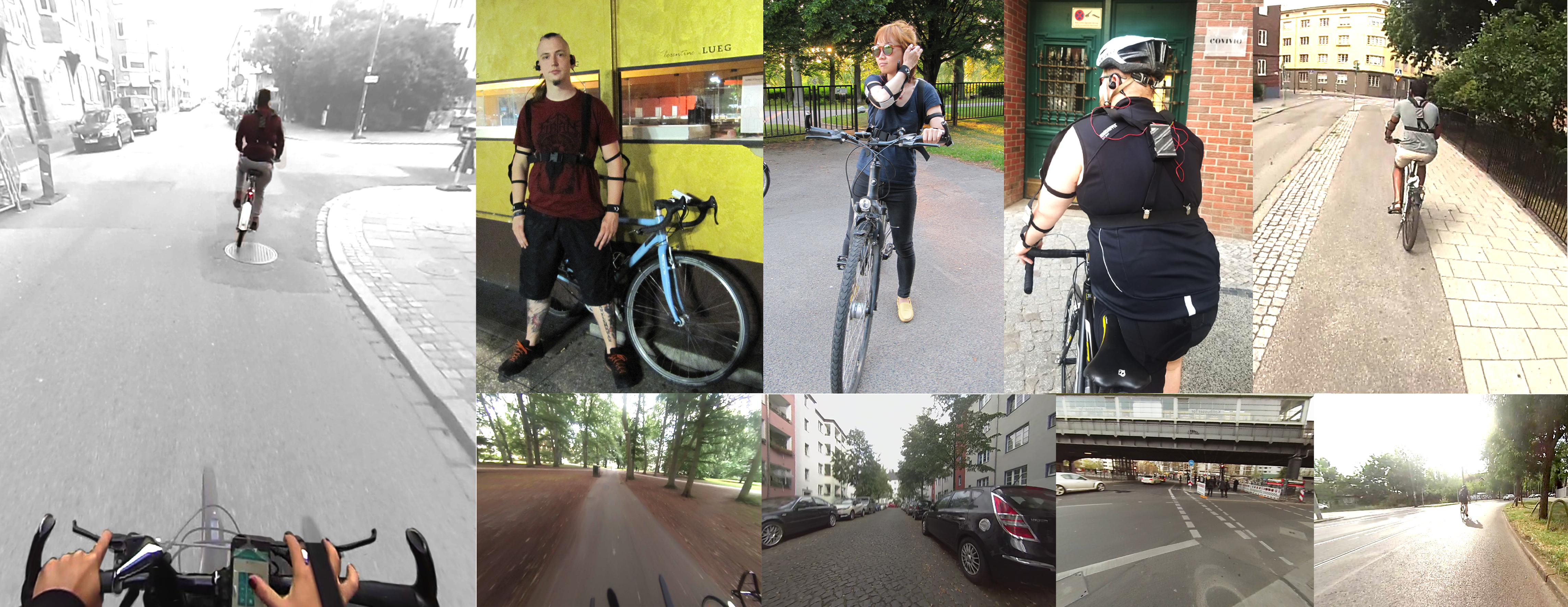Audio-tactile Navigation
A Non-visual Navigation System to Enhance Urban Bicycling

This research project investigates how acoustic and vibro-tactile signals can be used to provide cyclists with necessary navigation instructions while maintaining the ability to perceive ambient sounds and keep attention to the environment. In addition, the focus is placed on the experience of guided navigation with a non-visual, multi-sensory system.
Focus
Research project and Master thesisTools
Pen and Paper, GoPro, Arduino, Adafruit, Sensors and ActuatorsMethods
Videography, Surveys and Interviews, Bodystorming, Protosketching, Experience prototyping, User testingYear / Duration
2019 / 6 monthMaterial
Research Context
Bicyclists are increasingly shaping the picture of urban traffic. Regarding guided navigation, conventional navigation systems do not offer a safe and satisfying solution. Voice instructions are often perceived as annoying and far too detailed. Additionally, the usage of headphones to hear these instructions reduces the hearing and localization of environmental sounds significantly. Visual information on the other hand, draw the attention away from the main traffic situation. This affects the ability to react to and interact with other traffic participants and results in a feeling of insecurity.
Research Questions
- How can vibro-tactile information in combination with non-speech audio signals through open-ear headphones be used to deliver necessary navigation instructions for cyclists?
- How can these audio-tactile stimuli replace visual instructions and enhance the cycling experience?
Design Process
Research & Fieldwork
To design for urban cyclists and discover problem areas and design opportunities, one first needs to understand the experience of cycling with all its aspects as good as possible. Methods such as desktop research and interviews alone cannot capture the complexity of this physical activity and its dependence on contextual factors for the experience. In order to investigate and answer the question how a non-visual, multi-sensory navigation system for urban cyclists might look like, some questions had to be answered beforehand. The combination of videography, bodystorming and unstructured interviews was therefore chosen to get the best possible understanding of the cycling experience and answer the following questions:
- How do people cycle in urban areas?
- How does it feel to cycle and what sensory perceptions are experienced?
- What kind of digital devices are used while cycling?
- How and for what purposes are these devices used?
As cycling is a bodily outdoors activity and its experience is highly dependent on a multitude of factors, Research, Fieldwork and Tests were performed in 3 different european cities. The analysed results from the interviews and bodystorming exercises showed that factors like traffic infrastructure, density and composition of road users, pavement, noise level, bicycle type, time of day, and weather conditions have a significant impact on the cycling experience.
Protosketching & Experience Prototyping
This process phase was characterised by exploring the sensation of vibro-tactile stimuli, finding the right accoustic signals, continuous iterations, and testing of all components.
Some leading questions were:
- How many vibration motors are neede and what vibration patterns are perceived most intuitively?
- How many navigation instructions are really needed?
- What type of sound works best to be easily distiguashable from the surrounding sounds?
- How to mount the prototype on the head and body to fit different shapes and sizes?
- How to build and program the prototype to be tested in the field and make adjustments on the go?


Results
Final Prototype

Navigation Sounds
turn indicator
turn signal
stop / warning signal
destination reached
The final prototype was tested with a total of 25 participants in 4 cities with different bicycle infrastructure. To determine the influence of external factors on the navigation instructions, tests were conducted on different types of roads and pavements, under different weather conditions at different times of day, different noise levels, and bicycle types.
Test procedure
For tests in the field, a smart-phone was mounted on the handlebar of the bike from the researcher. The researcher was riding behind the participant and sent commands via the smartphone to the control unit to trigger an acoustic navigation instruction, a haptic one or a combination of both. The participants were asked to react according to their interpretation of the information they received. Using the Think-Loud method, participants were asked to verbalize their thoughts directly during the test.If consent was given beforehand, the test was recorded with a GoPro. After completion of the test semi-structured interviews were conducted, which were audio recorded.

Outcome
After combining and analyzing all the test data gathered, the following findings could be identified:
- Visual navigation instructions can successfully be replaced by audio-tactile stimuli
- Less is more - the limitation to only 4 navigational signals is perceived as just enough and superior the other navigation systems. However, the precondition is that a corresponding app for route planning provides a navigation map that can be viewed in case of doubt.
- The minimalistic approach could be unclear at confusing crossroads and roundabouts
- Multi sensory instructions, the combination of vibration and sound, are perceived as best. The combination of vibration and sound also makes the instructions understandable in almost all situations and under the influence of various external factors
- The sound is perceived as comfortable, clear and direct, and can be heard even in loud environments
- Vibration is perceived and understood most intuitively
- The learning curve is easy and fast, but a small onboarding or tutorial is necessary, especially for the specific meaning of the sounds
- People feel safer with a navigation solution that:
- requires less attention to listen and understand spoken instructions
- is not “talking” all the time
- allows to hear the surrounding, possible hazards and their direction
- allows to focus more on the street and the riding experience itself